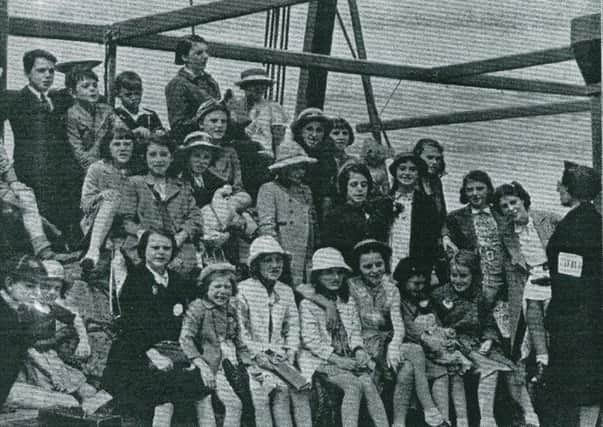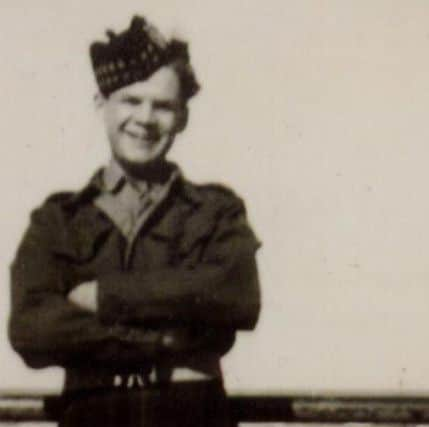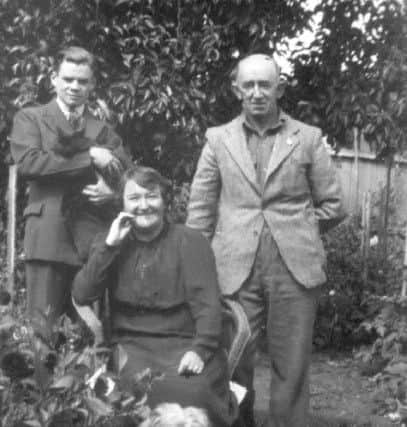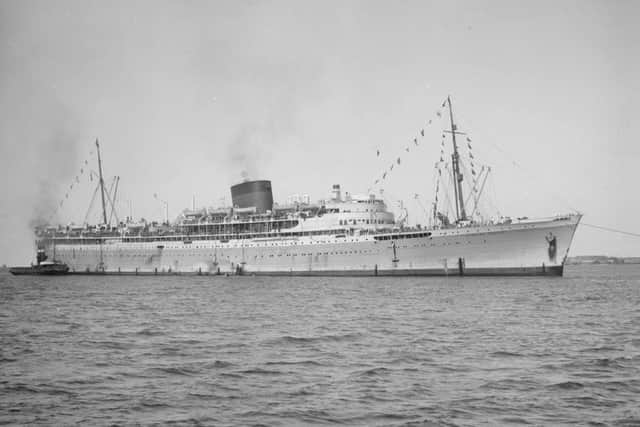The Leith teenager who started a new life in Australia


The teenager’s parents agreed to let him leave to the Borders, but little did they know he’d soon be back wanting to go the other side of the world.
Adventure-loving Bill was initially sent to Melrose with another boy from the Capital, where they were living in a conjoined house with the servants of Miss Laurie and her siblings.
Advertisement
Hide AdAdvertisement
Hide AdBill said: “Someone told me ‘they only took you to get the five shillings each’.


“I only went into the main house twice – when I arrived, and once when I wanted a second helping of pudding.
“Miss Laurie gave me some after telling me how she was related to Annie Laurie - from the famous Scottish song.”
Bill knew this wasn’t the life for him and soon returned to the dangers of the Capital.
Advertisement
Hide AdAdvertisement
Hide AdHe said: “I saw a bomb drop out of a plane once; watched it fall and heard the bang half a mile away.


“It landed on a tram-track; they said it was blown quite a few yards but no-one was hurt.
“Occasionally, you could see a dogfight just above the rooftops, one of our fighters chasing a German bomber.”
After returning home from school to the family home in Sloan Street, Bill had an idea that would change his life forever.
Advertisement
Hide AdAdvertisement
Hide Ad“I told them I had heard about this scheme for kids to be evacuated to Australia and how I’d like to go,” he said.


“They said it could be dangerous, but they agreed.” On August 5, 1940, Bill embarked on a journey from Liverpool to Australia on MS Batory with 476 fellow evacuees and 700 troops bound for Singapore.
The children, all with identity tags, stepped aboard anxiously following the trauma of the an air raid the previous evening.
One child said: “Dad, if bombs come into our town, can you send my mice up to Granny?”
Advertisement
Hide AdAdvertisement
Hide AdIn Meta Mclean’s book, ‘The Singing Ship: An Odyssey of Evacuee Children’, he wrote: “Singing being what escorts stumbled on to help the children settle.


“The children were quiet. It would have been better if they’d been more noisily distressed.”
It took Bill Oats, the Aussie deputy-chief escort, a week to retrieve the children’s luggage from a forward hold as the ship plunged its way through the Irish Sea with its convoy.
All the evacuees were given a book by escorts with Bill receiving ‘The Brave Book for Boys’. Rousing songs they sang included ‘We’ll Meet Again’ and ‘The White Cliffs of Dover’.
Advertisement
Hide AdAdvertisement
Hide AdA female escort said: “If that Scottish sentry out in the alleyway sings ‘I Belong to Glasgow’ any more, I’ll report him to the adjutant.”
The boat stopped off in Cape Town, South Africa, for a few days where Bill was unaware that just across the harbour a ship carried his grandfather, a Norwegian sailor and later commander of a Royal Navy submarine.
Bill said: “The native people packing oranges in a shed beside the ship threw oranges up to us.”


Frank was on the first boat that landed at Gallipoli in World War One.
Advertisement
Hide AdAdvertisement
Hide AdArriving in Hobart, Tasmania in October, Bill settled immediately at Ogilvie High School and with his new host family - Frank and Alice Littler.
Bill said of Frank: “He had a very good rifle shot.”
It is said as they approached the beach, Frank told his commanding officer: “I can see a sniper up there. I should get him before he gets us.”
The CO said: “Not until we get there.”
Moments later that sniper shot Frank in the arm and he needed medical treatment.
Bill added: “They took me in out of gratitude to the hospital. Only one kid at school understood my Scottish accent.
“I called him my interpreter.
Advertisement
Hide AdAdvertisement
Hide Ad“I had a good time at school. I got homesick, but they allowed us to send a telegram home every month. The first time I wore a kilt was in a school play in Australia.”
In April 1945, he turned 17 and was ready to go back home to Scotland and to his family. He became a soldier and embarked on a trip back from Sydney on board the MVStirling Castle.
Arriving back in Leith, he knocked on the door of his family home where he was greeted by his mother.
“Oh Bill, you’re home,” she said, as if he’d just popped out for some milk.
Advertisement
Hide AdAdvertisement
Hide AdBut the warm weather and way of life had got into his blood and he emigrated back to Tasmania at the age of 22, followed two years later by his parents.
Entering the Sydney to Hobart yacht race in 1954, he was “becalmed on the east coast after a good start and came nearly last”.
Bill enjoyed a successful career as a civil engineer, designing roads and bridges, and was in charge of a design section of the Hydro Electric Commission in Hobart, where he lived with his wife.
Speaking from his Tasmanian home in 2005, aged 78, Bill spoke of his memories growing up in Leith.
Advertisement
Hide AdAdvertisement
Hide AdHe said: “A house near us had a small metal plate on the wall with a line down the middle and the letter ‘L’ on one side and ‘E’ on the other.
“The owners said they slept with their head in Edinburgh and their feet in Leith!”
He added: “I still get melancholy about Scotland, the music, the dancing, but nothing serious.”
After war was declared, people expected that the Luftwaffe would bomb Britain and that civilian casualties would be enormous.
Advertisement
Hide AdAdvertisement
Hide AdThe Department of Health in Scotland spent the early months of 1939 preparing details for the evacuation of unaccompanied children, mothers with children under school age, blind people and invalids from vulnerable areas.
Following Germany’s invasion of Poland, 26,000 children in Edinburgh were taken out of the city. They were taken into centres from Inverness to the Borders.
By March 1940, even though 100 children were being sent from Edinburgh every week, only 9,968 remained outside the city - with many returning home like Bill.
The first raid on Edinburgh was on July 18 when Leith was hit by bombs from the Luftwaffe.
Advertisement
Hide AdAdvertisement
Hide AdA bomb also fell on 13 George Street, killing Jane Rutherford, 17. Yards in front of a stationary tramcar in the Commercial Street area, another of the bombs exploded leaving a huge crater.
Side glass blew out but amazingly, the 20 passengers were unhurt.
Wardens rounded up children playing in the street, shepherding them into shelters. Houses were evacuated temporarily after a bomb landed in the road in Nicoll Place without exploding.
Then, four days later, a morning raid was launched on Granton with no casualties.
Advertisement
Hide AdAdvertisement
Hide AdIn ensuing sorties, bombs fell on Portobello and another hit the lawn of the Palace of Holyroodhouse.
The lip of the huge crater came within a few yards of the walls of the historic building, and the shudder of the explosion drew some of the audience from the Regent Cinema in Abbeymount to see what had happened.
Then, on April 7, 1941 the tremendous power of a mine shattered a roof at Leith Town Hall.
The infant annexe of David Kilpatrick School next door was demolished and a church hall badly damaged. Tenements in Largo Place were hit and several residents were killed.
Advertisement
Hide AdAdvertisement
Hide AdThree churches and up to 200 shops and 270 houses were also damaged in the raid, in which just two mines had been dropped.
Overall, there were 20 deaths and 210 injuries in Edinburgh from bombing. George Street was demolished after the war and a new tenement built on the site.
The street name itself vanished, to avoid further confusion with the New Town’s George Street.